Itinerary for a Perfect Week in Italy’s Campania
This post may contain affiliate links to products or services I'm happy to recommend. If you click on an affiliate link and then make a purchase, Artsy Traveler may earn a small commission at no cost to you. Thank you!
The Campania region of southern Italy is packed with so many interesting things to see and do that a week might not be enough.
But given the choice between a week in the Campania and two days, I recommend a week. I’ve explored the region both ways, and a week is better!
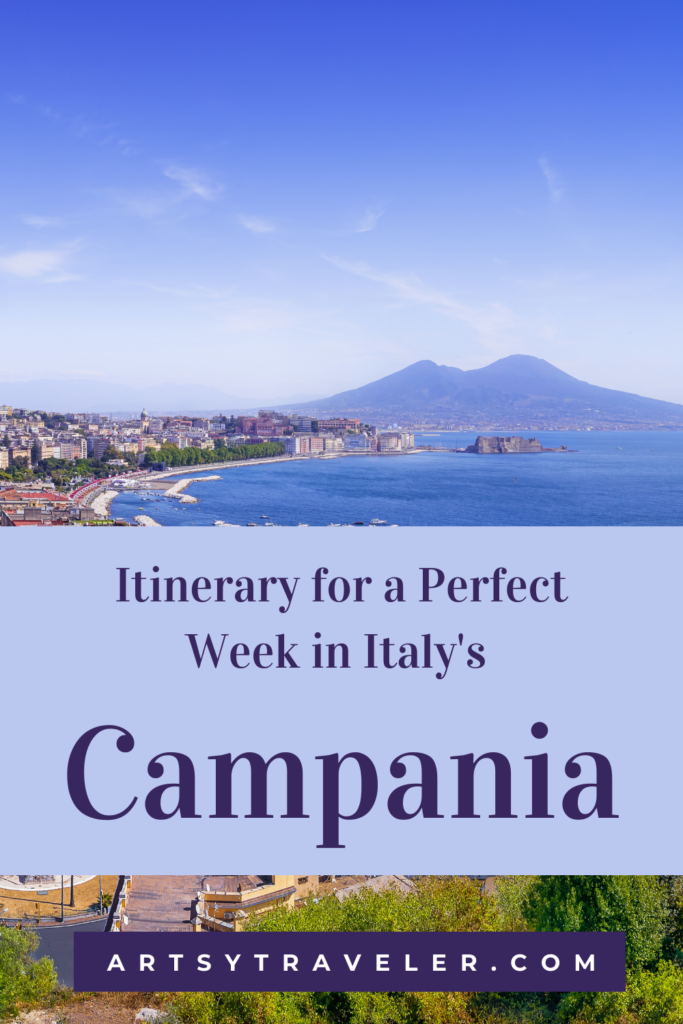
Getting Around Campania
Driving in this area is not for the faint-hearted and not the best idea unless you’re coming from another region of Italy and already have a car.
My suggested itinerary includes a combination of public transit and small group tours.
Spend three nights in Naples, two nights in Sorrento, and two nights in Positano on the Amalfi coast.
Another option is to spend the entire week in Sorrento, which is located between Naples and the Amalfi coast, and take day trips from there. You’ll spend more time commuting, but you could save money on restaurant meals by renting an apartment for the week. Plus, there’s something to be said for coming back every evening to the charming ambiance of one of southern Italy’s most beguiling towns.
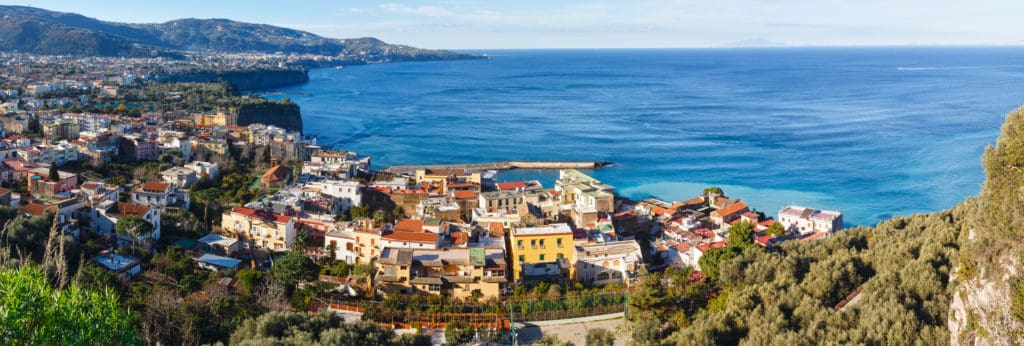
Highlights of your week include visits to Vesuvius, Pompeii and Herculaneum, the Isle of Capri and the Blue Grotto, and the towns of Sorrento, Positano, and Amalfi on the stunning Amalfi Coast.
Day 1: Arrive in Naples
Naples is kind of crazy, which is part of its charm.
Take the train directly from Rome and then take a taxi from the Naples train station to your hotel. I recommend staying in the Plebiscito area and splurging on a hotel that includes a sweeping view of the Bay of Naples with Vesuvius steaming gently in the distance.
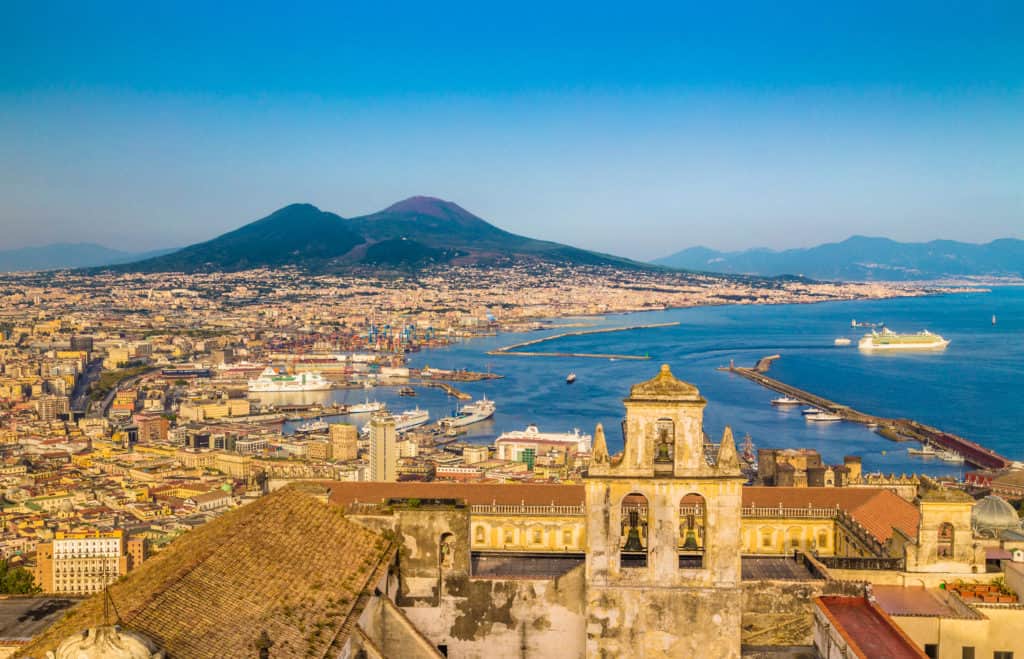
On your first afternoon, take a taxi to the Museo Archeologico Nazionale (the National Archeological Museum) which contains one of the world’s finest collections of Greco-Roman artifacts. Here’s a comprehensive description of the exhibits.
A Naples Art Card offers discounted entry into the Museo Archeologico Nazionale and several other major museums in Naples.
Other sites in Naples include the opulent Palazzo Reale located in the Piazza del Plebiscito and the nearby Castel Nuovo. From the top of the castle ramparts, you’ll enjoy stunning views of Naples and the harbor.
In the evening, stroll through the atmospheric Santa Lucia district–a labyrinth of narrow cobbled streets winding from just west of the Piazza del Plebiscito down to the sea.
And eat pizza! You’re in the birthplace of pizza, and Neapolitan pizza is the best of the best.

Safety in Naples
Are you safe in Naples? The city has a reputation for petty crime, but how dangerous is it for the tourist? This article gives you the lowdown, but the short answer is yes, you’re safe in Naples.
Days 2 & 3: Mt. Vesuvius and Ruins
You could probably “do” Vesuvius, Pompeii, and Herculaneum in a day, but I don’t recommend it. Instead, consider two separate day tours–one that takes in Vesuvius and another that covers Herculaneum and Pompeii or whatever combination of the three sites works. For example, find small group tours to Vesuvius and Pompeii, or Pompeii and Herculaneum, or Herculaneum and Vesuvius.
The key is to save yourself stress by taking guided tours to these incredible sites. It’s possible to see them via public transit, but unless your budget is really tight, I suggest you give your day over to an experienced guide and then sit back and soak up the landscape and the history.
Here are a few tour and skip-the-line ticket options for the area:
Vesuvius
I first scaled Vesuvius in a chair lift on a bitterly cold December day. The views were spectacular as was the proximity to the smoking crater. Nowadays, you’ll have to hike uphill for a steep 30 minutes to reach the summit. From there, circumnavigate the crater’s lip to enjoy jaw-dropping views of Naples, the aqua Mediterranean, and Pompeii.
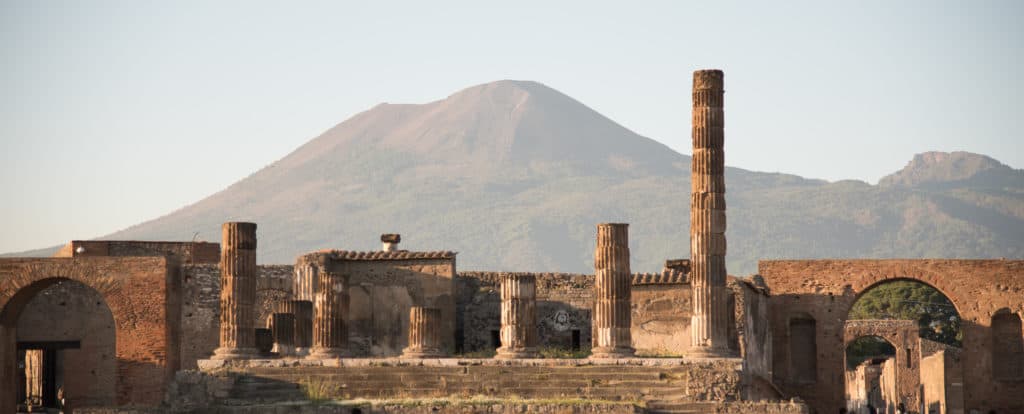
In 79 AD, Vesuvius blew up and buried the cities of Pompeii and Herculaneum. For eighteen hours, the mountain spewed ash, dust and rocks twelve miles into the sky. The poor folks in Pompeii and Herculaneum didn’t have a chance.
Visit Vesuvius and Pompeii with Rick Steves in this article.
Pompeii
The most poignant thing about Pompeii is its frozen-in-time quality. Volcanic ash has preserved the bodies of people and animals twisted in the final throes of death.
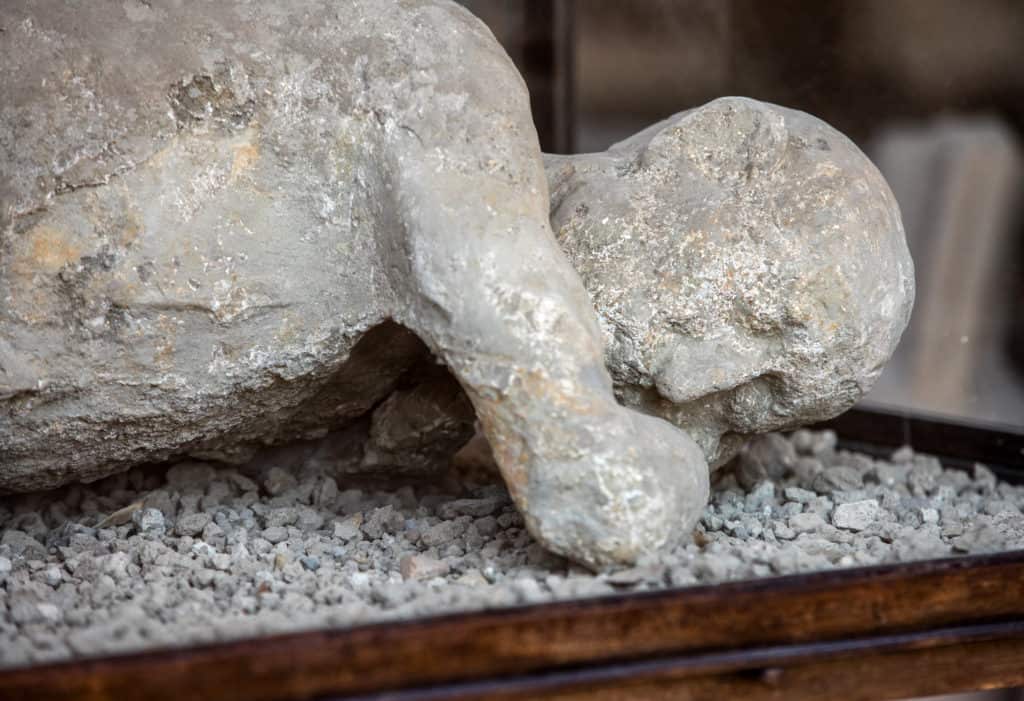
You also get a remarkable look at everyday life. You’ll see electoral propaganda messages painted on walls, elegant villas, modest houses, peasant dwellings, and even squalid brothels. Walk through narrow lanes to see the remains of workshops complete with furniture, tools, lamps, and foodstuffs. One of my favorite things was seeing the ruts cut into the stone roads by chariot wheels.
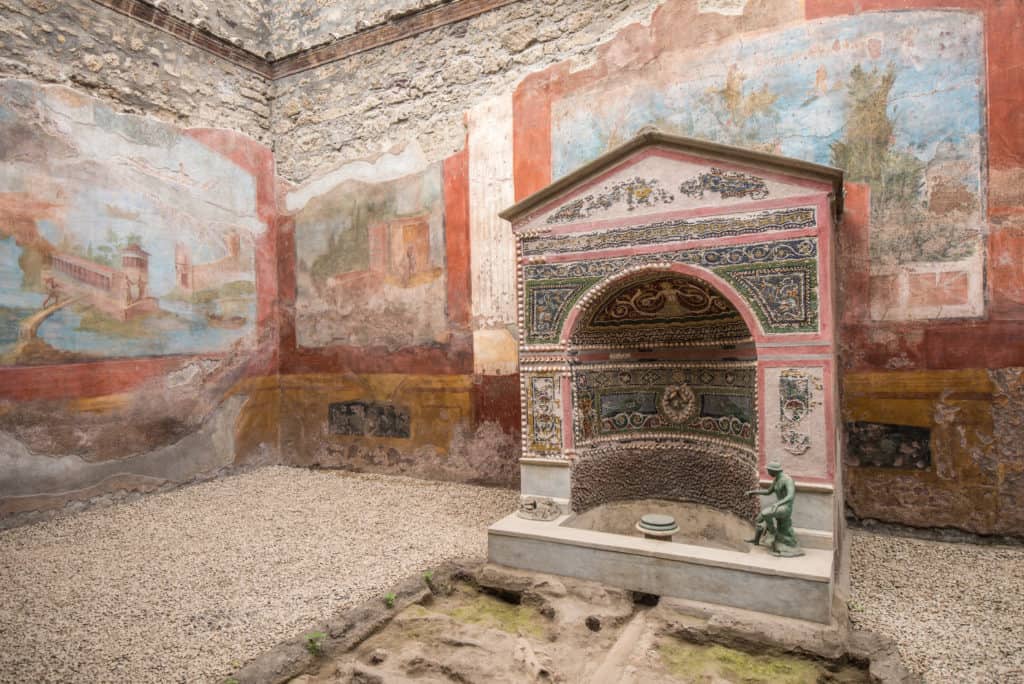
You need to spend at least an afternoon, preferably an entire day, in Pompeii. If you’re a big fan of Roman ruins, choose a day tour that gives you plenty of time to wander around the excavated areas and the museum.
Herculaneum
Allow yourself time to visit Herculaneum. Although smaller than Pompeii, Herculaneum is richer, with larger houses, more impressive mosaics, and better-preserved ruins.
More complete houses remain because the ash from Vesuvius destroyed Herculaneum in a different way than it did Pompeii. In Pompeii, falling ash collapsed many of the roofs, whereas the ash fell more slowly over Herculaneum, covering and preserving wood and other organic objects.
Herculaneum is less crowded than Pompeii and much smaller, with better frescoes and mosaics. However, much of the city is yet to be excavated.
Days 4 & 5: Sorrento
Getting to Sorrento
Take the train to the charming town of Sorrento or catch the ferry from Naples.
We took a taxi from our hotel in Naples and got into trouble when the driver demanded payment upon our arrival at the hotel in Sorrento. I’d already paid the manager of the hotel in Naples for the taxi. Unfortunately, we’d mistakenly taken the wrong taxi at the Naples hotel.
The driver spoke only Italian and was very angry with the stupid tourists who didn’t want to pay twice for the ride. Fortunately, the manager of the hotel in Sorrento called the Naples manager, and, after much yelling and gesticulating, during which time I was sure blows would be traded, everything was sorted out. The taxi driver grudgingly shook our hands and presumably drove back to Naples to get his money.
I haven’t taken the ferry to Sorrento, but it seems like a great option. The ride is scenic and takes only 45 minutes. Purchase tickets here.
Hanging Out in Sorrento
Lemon trees and palm trees, houses clinging to cliffs, the turquoise Mediterranean–this area of southern Italy is postcard-perfect.
And Sorrento makes the perfect home base to explore the area.
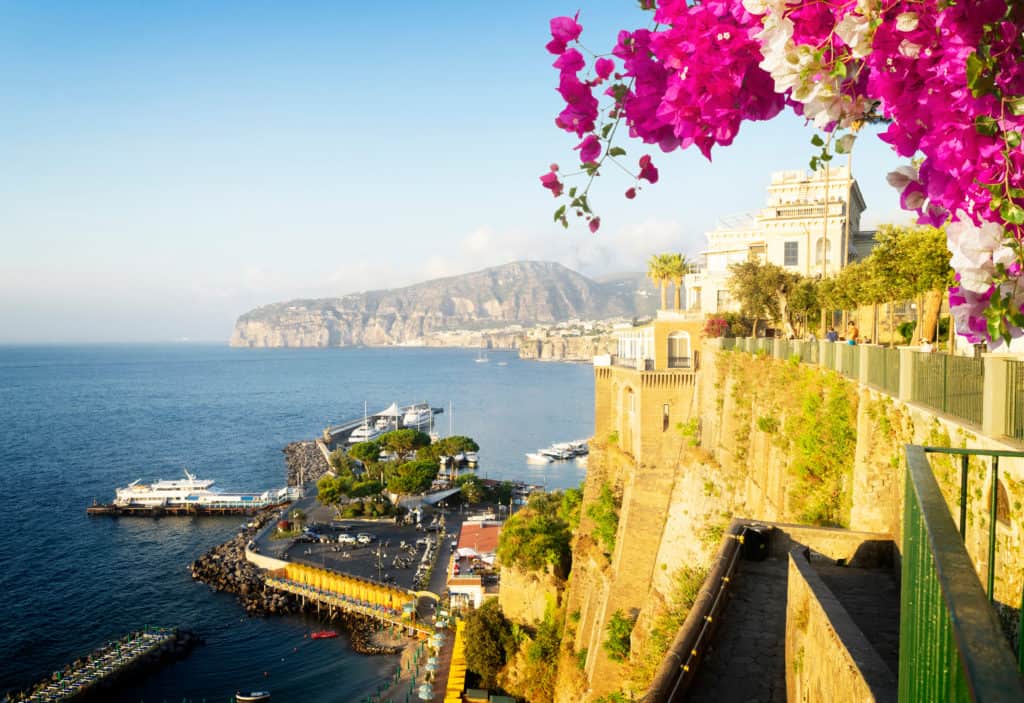
The whole point of Sorrento is to slow down and relax. Amble along the small streets and enjoy la dolce vita. If you’re into shopping, Sorrento is the place to buy inlaid wooden boxes. I still have the wooden music box I bought on my first trip to Sorrento in the 1970s.
Sorrento is also a good place to buy cameos. Unfortunately, I lost the pink cameo I bought there. I still miss that cameo.
In the early evening, join the locals for the passeggiata. Families and couples dress up and stroll the shady streets, talking and laughing, gelatos in hand. The bars are full, and everything seems right with the world.
Visiting Capri
If the weather is fine, book a boat tour to the fabled Isle of Capri and its Blue Grotto. Yes, Capri can get crowded, but it’s drop-dead gorgeous, with its white limestone cliffs, azure ocean views, and tumbling gardens. Catch an early hydrofoil from Sorrento to avoid the cruise-ship crowds that clog the streets by midday.
A visit to Capri’s Blue Grotto is worth the time and effort required to get there, even if you’re only in the grotto soaking up the blue for a few minutes. The Blue Grotto is a sea cave famous for its luminous blue light and shimmering waters accessible only in a tiny dinghy through a narrow entranceway.
Duck!
A boat you catch on Capri stops at the grotto and waits while you board the dinghy and are rowed into the grotto. If you’re prone to seasickness, pop a Gravol before leaving the dock in Capri.
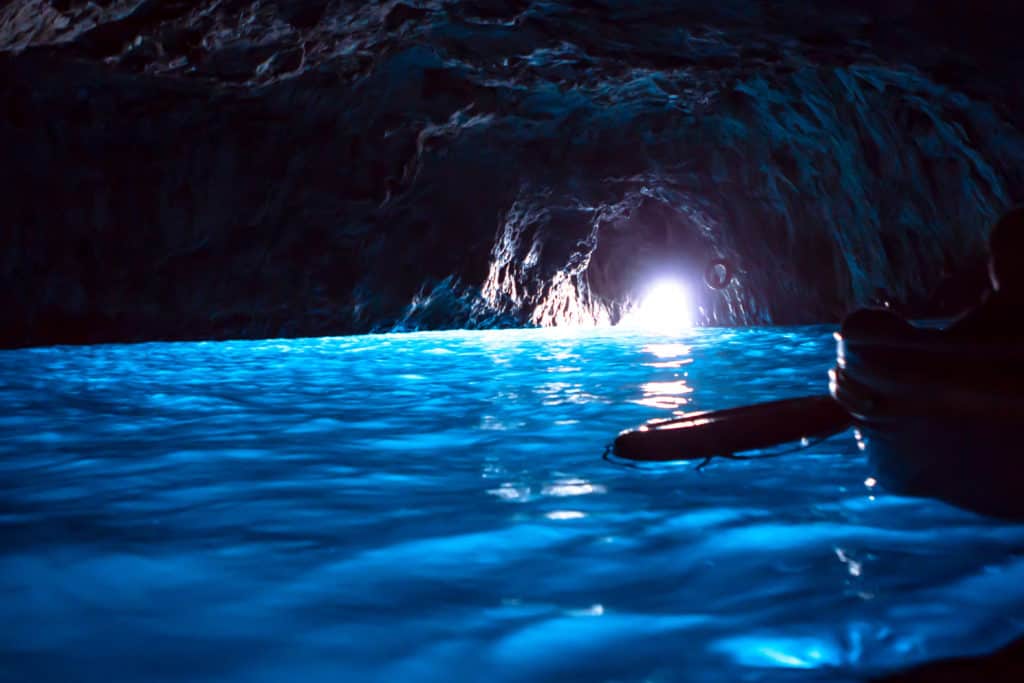
Scrambling into the little dingy from the larger boat can be either entertaining or terrifying, depending on your fitness level and tolerance for danger. I didn’t ask the guide how many people fall into the water every year. I suspect he wouldn’t have wanted to tell me.
The Blue Grotto is open year round, weather permitting. I visited on a sunny day in late December.
Days 6 & 7: Positano
Continue home-basing in Sorrento and take a day trip down the Amalfi coast, or pull stakes and make Positano your home for two nights. I suggest the latter to give you a more intimate feel for this charming town that tumbles down the cliff to the Mediterranean. Devote a day to visiting the town of Amalfi to view its colorful houses and stroll the beach.
Positano and romance go hand in hand. Did you ever see Only You with Marisa Tomei? The scenes shot in Positano are some of the movie’s most beautiful. If you have a lot of money, stay at the Sirenuse Hotel where scenes from the movie were shot.
Visit Positano to steep yourself in beauty. Wander the tiny streets, gaze out at the views, snap hundreds of photos, eat great food, and just relax.
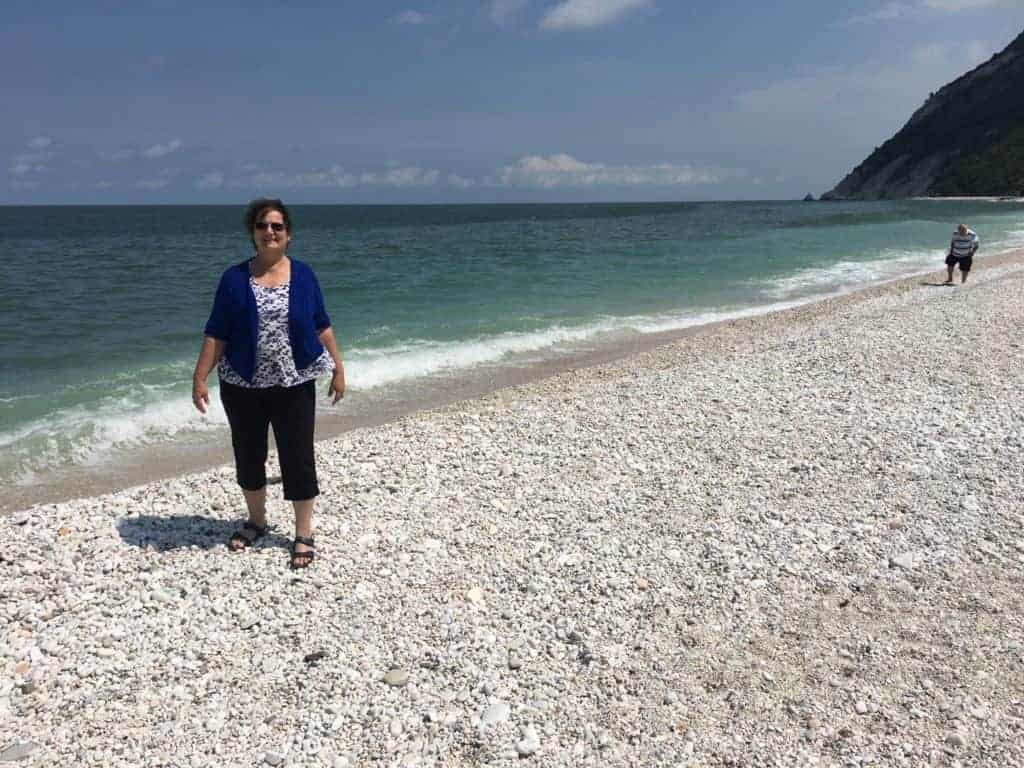
Where to Stay in Campania
For accommodation suggestions in Naples, Sorrento, and Positano, see Recommended Places to Stay in Italy That Will Make Great Memories.
Conclusion
Have you visited the Campania? Add your suggestions in the comments below. For more posts about Italy, check out:
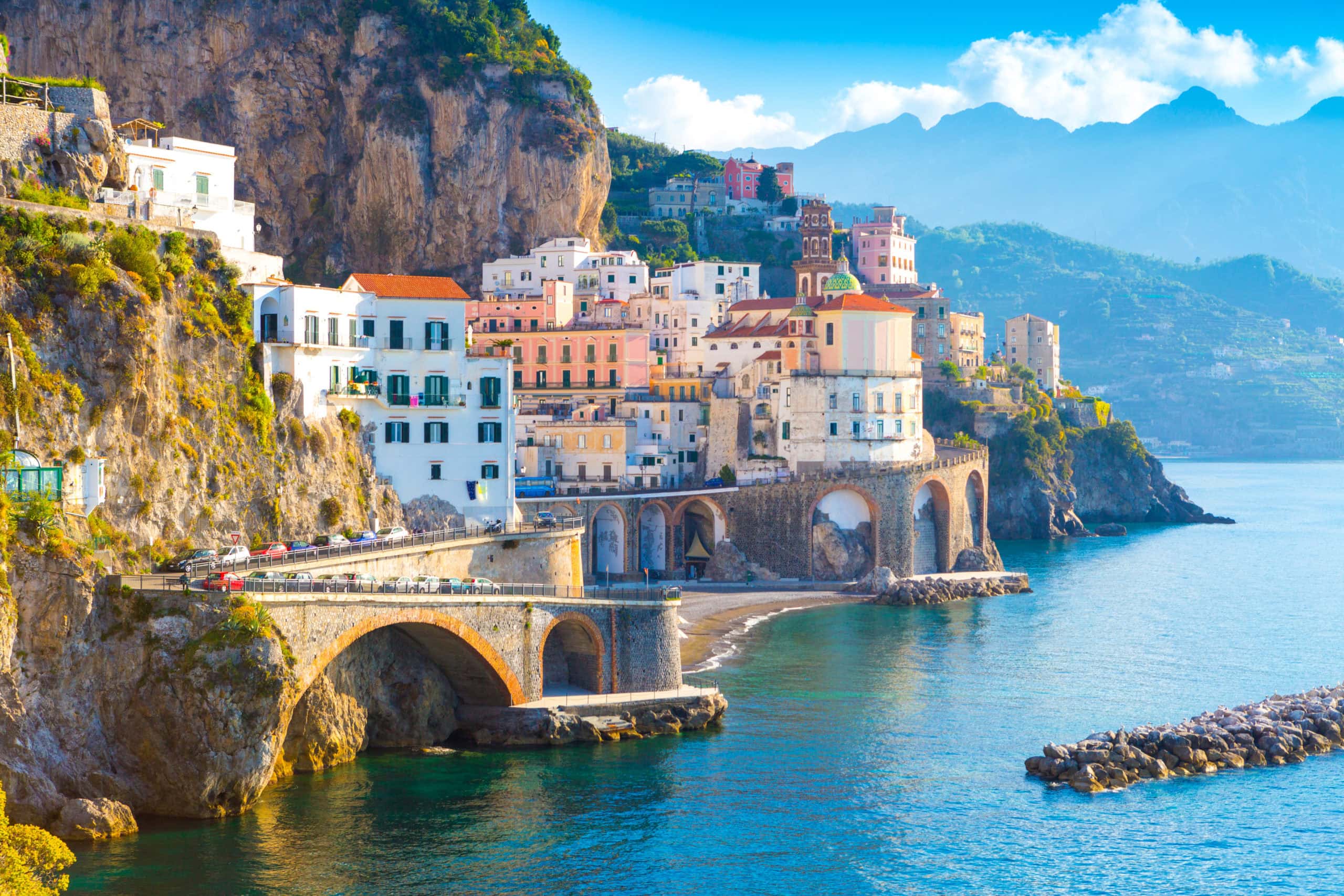
[…] Read my recommendations and a suggested itinerary for a Week in the Campania. […]